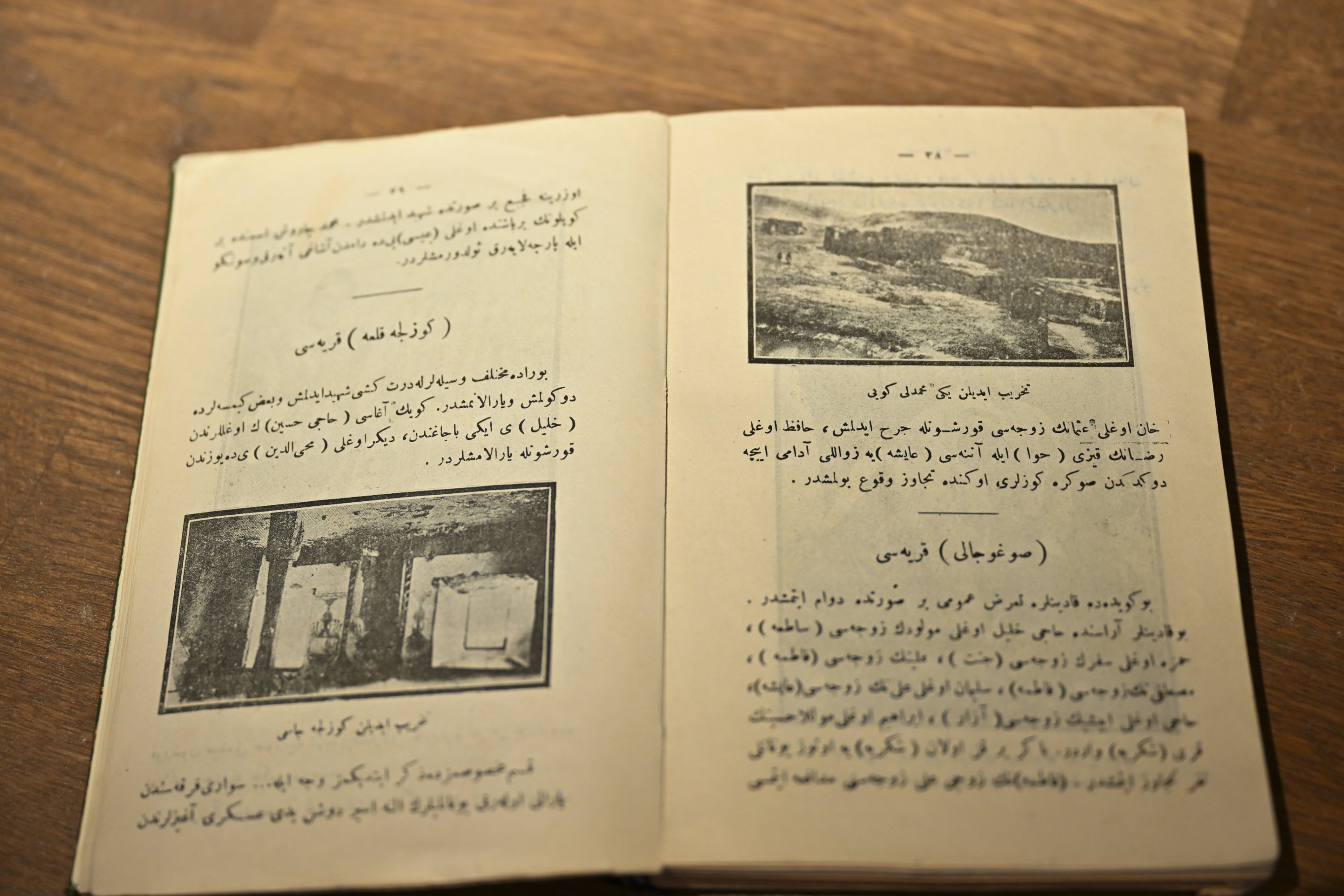© Turkuvaz Haberleşme ve Yayıncılık 2026
As Türkiye commemorates the fallen and victorious souls of the Battle of Sakarya, a report by a committee comprising some of the most prominent Turkish artists lays bare the atrocities committed by invading Greek forces against Turks 102 years ago.
The battle, which pitted Turkish forces under the command of the republic’s founder Mustafa Kemal Atatürk against Greek invaders, is hailed as the penultimate push to drive out occupying forces from post-World War I Türkiye. It put an end to Greece’s ambition to capture Ankara, the future capital of the country, and forced Türkiye’s western neighbor to accelerate their retreat to the west.
Fought mainly in Polatlı, now a district of Ankara, the battle drew its name from the Sakarya River that stretches from the northwest to the capital's borders.
“There is no line of defense, there is a field of defense and this field is the entire homeland,” Atatürk had famously told the army before the battle, ordering troops to fight to the death, “even if you see other units falling next to you.”
The battle began on Aug. 23 and concluded on Sept. 13, 1921, by stopping the Greek advance. It was preceded by another battle in the west that had forced Turkish troops to retreat.
The Turkish retreat to the east of the Sakarya River had fueled a debate at the fledgling Parliament of post-Ottoman Türkiye and dampened the public mood. Seeking a firm response against the Greeks, Parliament appointed Atatürk as the commander of the army that would counter the Greek advance. Atatürk mobilized the public by issuing a series of orders calling the nation to donate whatever they had to the army, from guns to food.
The strengthened Turkish side confronted the Greek side on the south of the Sakarya front on Aug. 23 and the battle line sprawled across an area of about 100 kilometers (62.13 miles). Though exact figures are not known, some 14,000 soldiers died on the Turkish side, while Greek forces lost several men as well.
The battle was one of the bloodiest in the war and Turkish forces rarely gave up the fight apart from brief retreats, despite the nation's exhaustion from World War I.
The battlefield moved to the Haymana district of Ankara in September, but the Greek offensive failed once again. Turkish forces drove the Greeks to their defensive lines and on Sept. 13, the entire Greek army was compelled to withdraw.
One year later, and again in August, Turkish forces won the last battle, the Battle of Dumlupınar, against the Greek invaders.
It was the longest pitched battle in world history but what followed the battle was as bloody as what happened during it, Kenan Arslan, the assistant coordinator of Polatlı Historic Fields Promotion Center, told Anadolu Agency (AA).
The cruelty that unfolded during the Battle of Sakarya is unfathomable, Arslan noted, referring to Greek forces exclusively founded for ravaging villages along their path, stealing crops and cattle, and torturing women.
“They burnt the entire village in Çekirdeksiz, took away the cattle and killed the rest,” Arslan said. “Everything they did constitutes a war crime.”
A “Committee of Atrocity Investigation," which was founded by the commander of the Western Front, Ismet Inönü, recorded these atrocities, and revealed the details for the first time via AA, Arslan noted.

Inönü, Türkiye’s second president and right-hand man to Atatürk, sought to spread the word about the justified struggle of Turks. He employed Halide Edip Adıvar, a novelist and intellectual who served as an intelligence officer with a corporal status on the Western Front, historian Yusuf Akçura, and author Yakup Kadri Karaosmanoğlu, under the Commission for Investigating Greek Atrocities. The commission worked for a week to document said cruelties through investigations and interviews in key areas, Arslan said.
“These people, all close, trusted friends of Atatürk who had been involved with the national struggle from the start, were specifically chosen for this committee,” he said. “They also knew the region very well.”
People of the Çekirdeksiz village in the Polatlı district told AA about what they learned from their grandparents and what the Greeks did in 1921.
“My father was a 7-year-old child at the time,” Metin Yıldırım recalled. “He remembered the Greeks rounding everyone up and taking them captive for 17 days. He said they would send some women and children to the village to bring back food sometimes.”
Another resident named Hulusi Ayaz from Çekirdeksiz, citing his grandparents, said the Greeks torched everything in the village and rounded up the residents on the skirts of a mountain.
“They pushed aside older adults and picked young girls whom they wanted to take with them. When the girls didn’t want to go, their mothers and the children all fought with the Greek soldiers,” Ayaz said.
“My grandparents said the mothers hid their daughters in the attics, smeared their faces with mud and dressed them in ugly clothes but the Greeks kidnapped the girls to the mountains anyway. Then, Mustafa Kemal and his army rode in and pushed the Greeks back into the river," he added.
